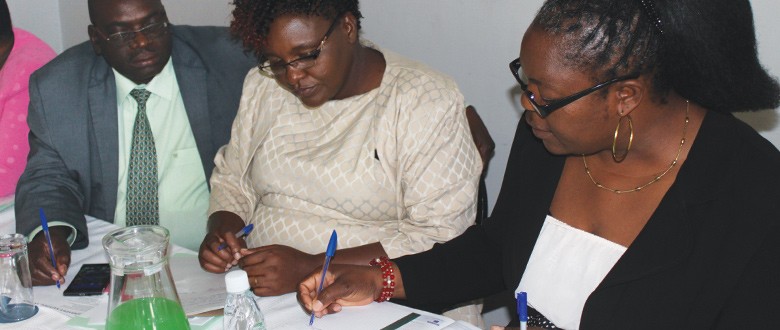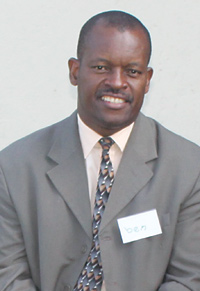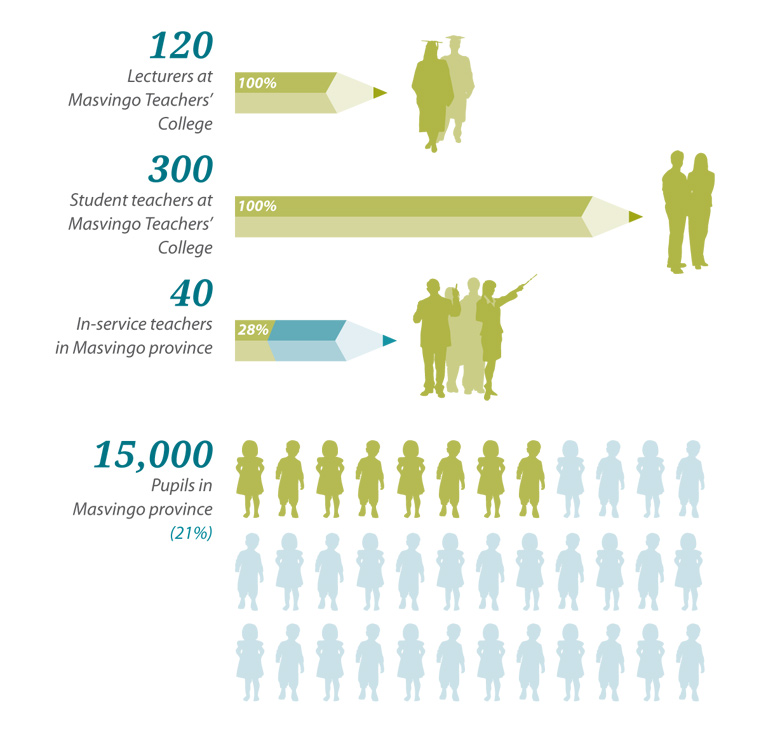
Documentation and tracking of pupil’s progress in schools is not a new practice in the Zimbabwean education system, evidenced by numerous documents and record books kept by teachers. Whilst most teachers, particularly in early childhood education, are exceptionally good at keeping the record books up to date, observations have exposed minimal use of the tools in identification of pupils’ learning needs.
Masvingo Teachers’ College made the same observation and questioned this practice. Hence it became the first college to express interest to work on the theme of ‘early identification of children’s needs’. Together with VVOB, they started a trajectory to develop a monitoring tool that helps teachers identify children’s learning needs.
Preparing the ground
The initiative began with an exchange visit between Masvingo Teachers’ College and VIVES University College, which was organised by VVOB. The aim of the VIVES visit was for Masvingo early childhood education lecturers to experience good practices in colleges that had already established a viable child monitoring system. After this exposure Masvingo teachers embarked on a needs assessment. This lead to a critical reflection on what needed to improve for them to be able to have a child monitoring system that works. The areas identified were sent to VIVES and a training package to build the capacity of Masvingo lecturers was developed. VVOB supported the college in creating a trajectory to guide the change process. The ground had been cleared… ready for action.
Planting the seeds
In 2015, VIVES guided the Masvingo early childhood education lecturers through two training activities. The activities aimed at enhancing the lecturers’ capacity with skills and knowledge on how to develop a child monitoring system. Follow-up by the VVOB team resulted in the development of the first child process–oriented monitoring tool in Zimbabwe.
Through workshops the tool was shared with early childhood education teachers. They pre-tested the tool and gave feedback. A teacher from Victoria Government School said: “This tool empowers the teacher to know the learners in depth as individuals. It enables the teacher to know children who need assistance, check learners progress easily and to also plan appropriate interventions for each child, making teaching more fulfilling.”
 |
We have put ourselves on the map as the first college
to develop this process-oriented child monitoring system. Mr Ben Mtambudzi, principal of Masvingo Teachers’ College |
The result
The college launched the first process-oriented child monitoring system. “We have put ourselves on the map as the first college to develop this system. Remember the purpose of education today, is to promote learning for all children and our students will be capable of doing just that”, beamed Mr Mutambudzi, the principal, whilst addressing the early childhood education lecturers during the launch.
Following this success, two other Zimbabwean teacher education colleges (Madziwa and United College of Education) have engaged Masvingo to get assistance in integration of early identification in their teacher development programmes. The Ministry of Primary and Secondary Education, which recently reviewed its curriculum framework, has also expressed interest in the process-oriented child monitoring assessment tool. This innovation is a first step towards inclusive education in Zimbabwe.





